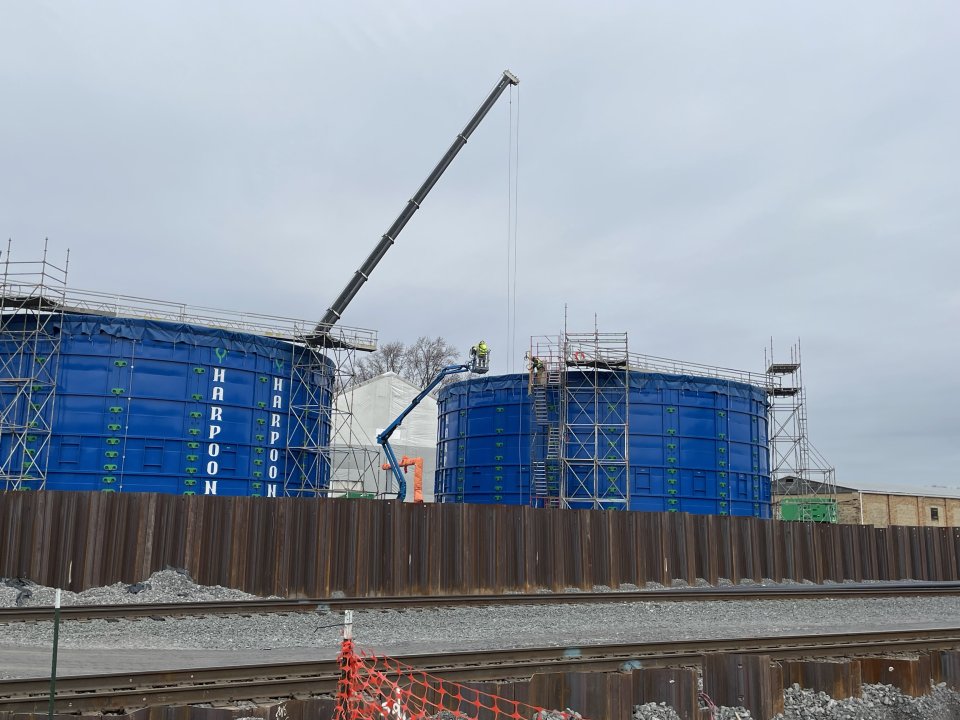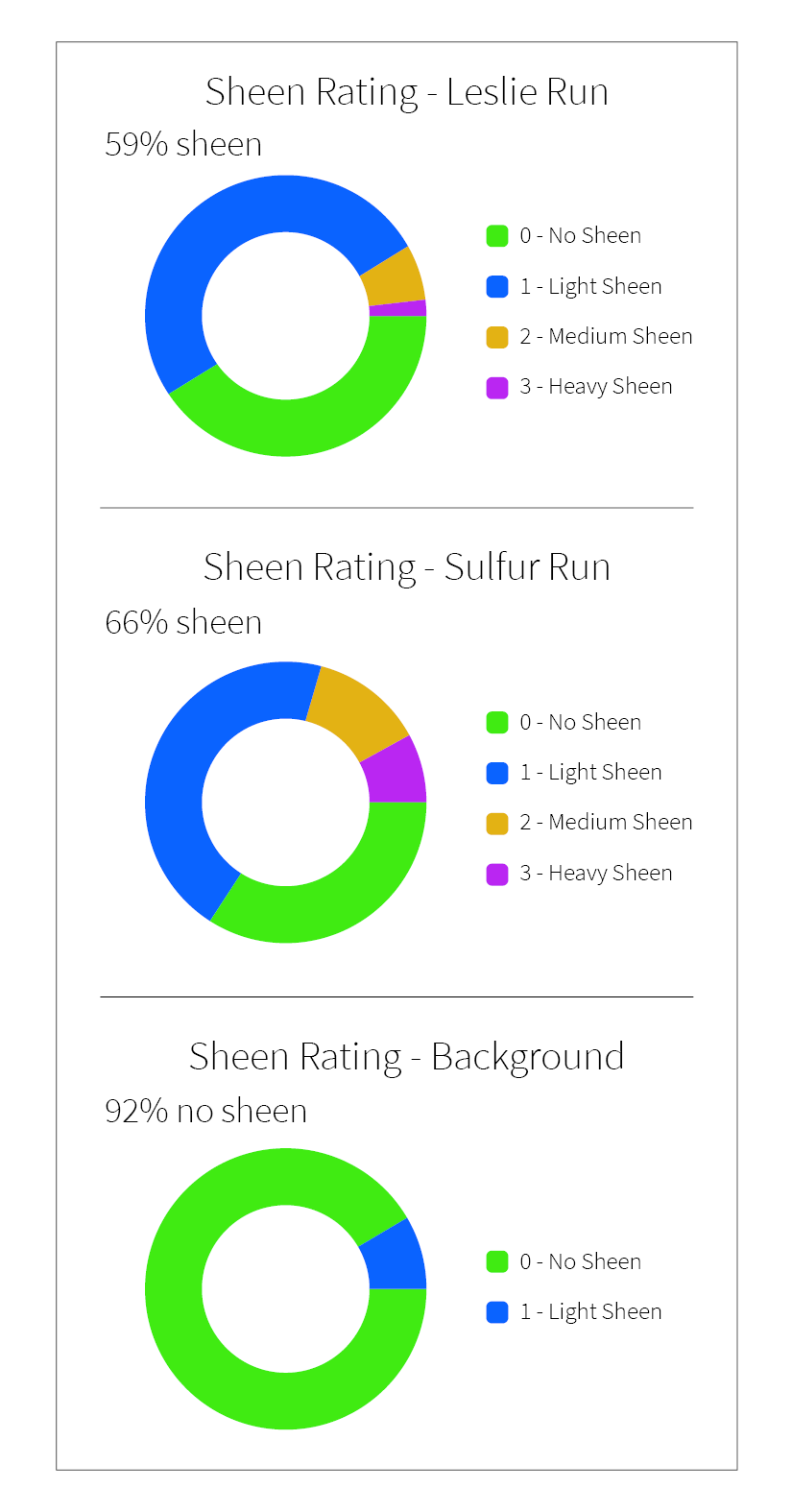Newsletter: East Palestine Train Derailment Response, 1-10-2024
Newsletter serving Serving East Palestine, Negley, Darlington, and surrounding communities
On this page:
- Progress Made
- The Look Ahead
- Community Research Project Update
- Project Spotlight
- Please Note
- About this Publication
Progress Made
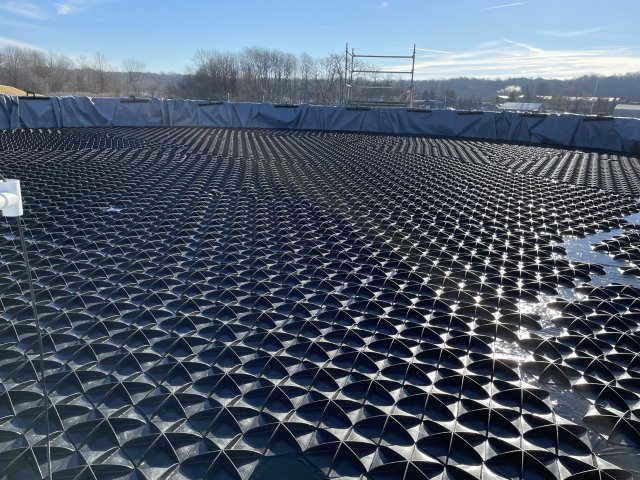
Results from Qualitative Stream Assessments
Preliminary findings from qualitative stream assessments in Sulphur and Leslie Run show different levels of oily sheen found in each stream when sediments are intentionally disturbed. Over the last few months, crews assessed both impacted downstream and unaffected upstream areas. A total of 821 locations were assessed and qualitatively graded on a zero to three-point scale depending on the amount of visible sheen. In Leslie Run, 59% of observed areas had some sheen, compared to 66% of observed areas in Sulphur Run. In background areas , such as unaffected upstream areas, 92% of observed areas had no sheen. Following this qualitative sheen survey, some of the sheens and associated sediments were sampled to determine their chemical makeup. Preliminary results of that sampling are undergoing review. That review will then guide planning for precisely how and where additional cleanup and monitoring of the streams will be conducted. Please avoid the creeks while assessment and cleanup work is ongoing.
On-site Winterization Improvements
Important winterization improvements are in place at the site. The large effluent tanks containing treated water have floating lids to prevent heat loss. Also, scaffolding and trusses are being installed to suspend heating plates inside of the untreated blue tanks, with winches to raise and lower the heating elements as water levels inside the tanks change. Exposed pipes are wrapped in insulation and heated to prevent freezing. Additionally, a structure was placed over the wastewater treatment system to ensure treatment can happen in freezing temperatures.
Culvert Cleanout Update
Cleanout is complete in four of five underground culverts in East Palestine. Cleanout operations involved using upstream and downstream dams and vacuum trucks to safely pump out sediment. Cleanout plans for the last remaining culvert are currently being considered by EPA. No sheen was observed in the four culverts that have been cleaned out so far. The assessment in the remaining culvert does show some evidence of sheen generation when certain sediments are disturbed. Air monitoring and sampling have shown no detections of contaminants of concern during cleanout and assessment activity.
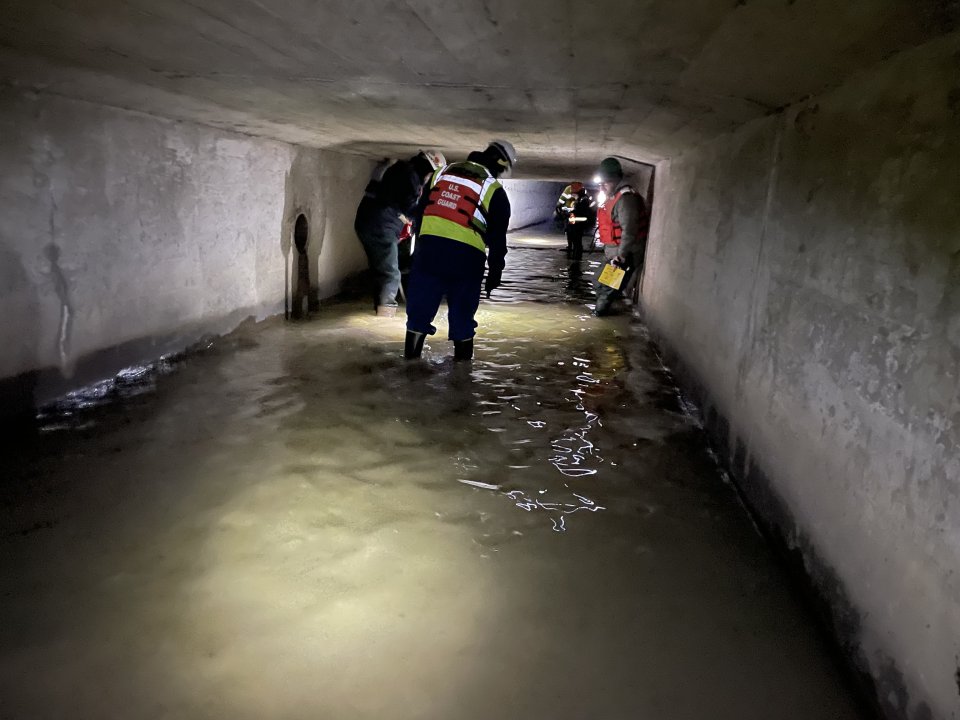
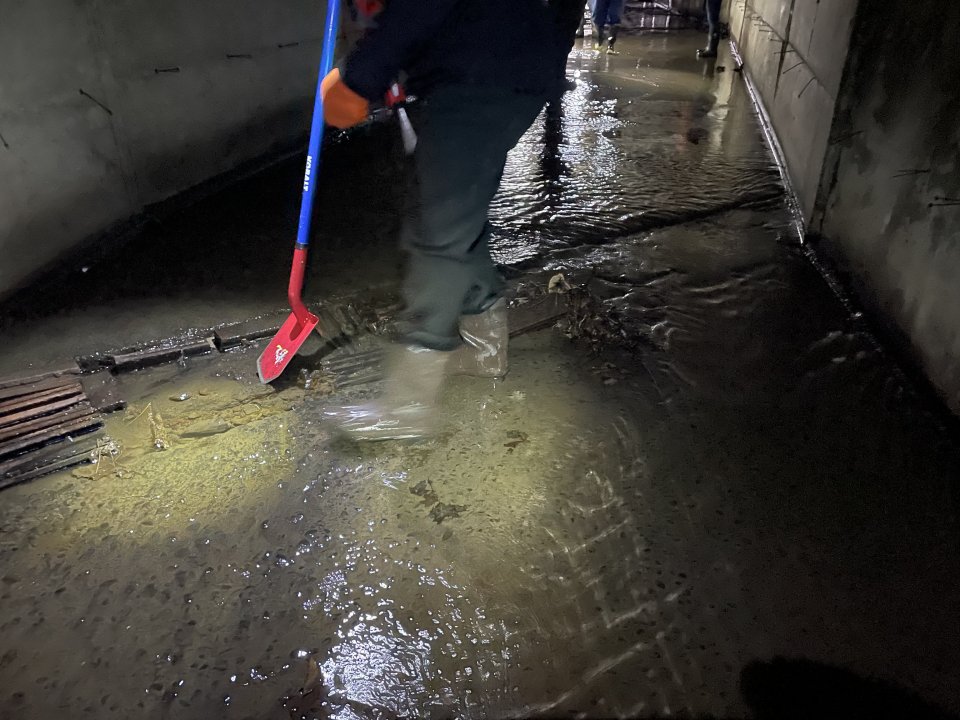
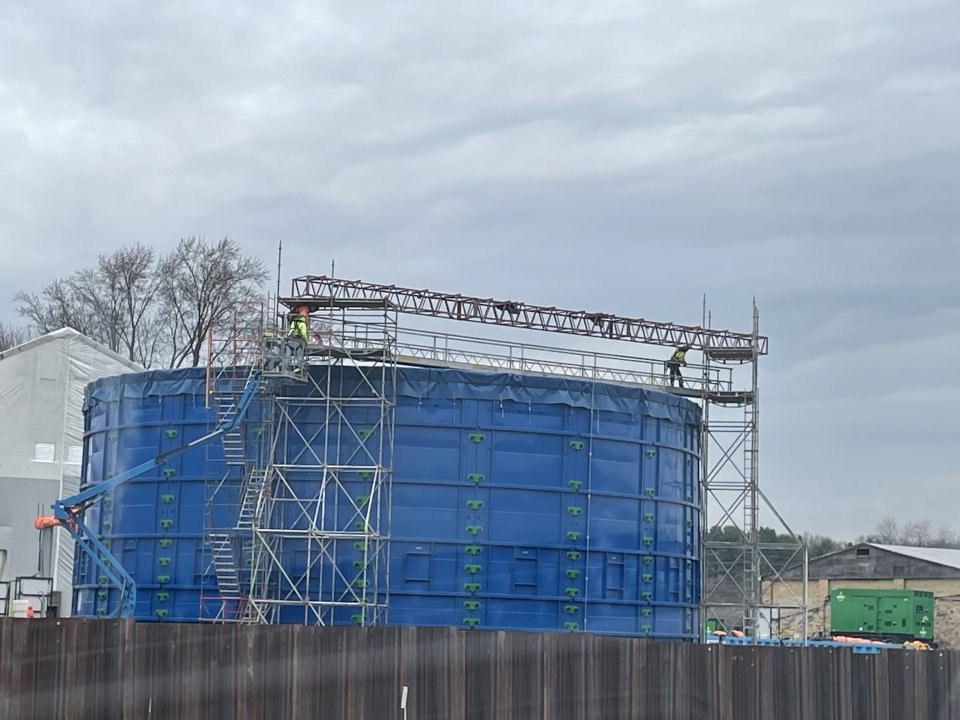
The Look Ahead
- Additional soil investigation and sampling will continue in and around the derailment site. This work is performed in areas where equipment, materials, and debris were handled as part of the overall emergency response.
- Groundwater monitoring will continue around the derailment site.
- Additional site winterization will continue to prevent water from freezing and ensure worker safety.
- Maintenance and winterization will continue at the on-site wastewater treatment system, including replacing quickconnect hoses with more stable PVC piping. Water will continue to be shipped off-site for disposal as hazardous waste until the wastewater treatment system is active.
- Safety measures along Taggart Street will continue with operations at the derailment site.
Community Research Project Updates
National Academies of Science, Engineering, and Medicine workshop report now available
The National Academies of Sciences, Engineering, and Medicine have released a 13-page report summarizing the virtual public health workshop held in November 2023. During the 2-day workshop, discussions centered on perspectives of the incident’s impact, hazardous material exposures and risks, risk characterization and communication, and challenges in and strategies for addressing and monitoring long-term community health impacts. The summary report, workshop recordings, and presenter materials are available on the NationalAcademies.org website.
University of Illinois Chicago Community Experiences Survey Report now available
A team led by Dr. Lauryn Spearing, an assistant professor of civil engineering at the University of Illinois Chicago, has shared results from a survey on community experiences following the derailment. Findings were based on 256 responses collected from July to September 2023. The survey report lays out key findings and recommendations for topics including water, air, and soil testing to meet community needs; risk communication; and improved human services delivery. The report includes insights into the relocation and evacuation of residents, odors noticed in homes, drinking water concerns, level of trust in information sources, risk communication effectiveness, and more. Resident interviews are still being analyzed. The full Community Survey Report is available on the East Palestine Research Study website.
University of Kentucky Community Health Tracking Survey preliminary data now available
Preliminary data is available from the community health tracking study led by Erin Haynes, chair of the Department of Epidemiology and Environmental Health at the University of Kentucky. She presented the pilot study’s initial results at the Public Health Research and Surveillance Priorities from the East Palestine Train Derailment workshop in November. The survey reported high rates of respiratory, neurological, dermal, and gastrointestinal symptoms as well as indicators of stress and PTSD attributed to the derailment. Dr. Haynes emphasized the importance of collaborating closely with the community to build trust and improve communication. The wristband samples collected from 84 residents are still being analyzed for chemical exposure at two university labs. To watch the recording of Dr. Haynes presenting these findings, visit NationalAcademies.org website.
East Palestine Indoor Air Monitoring Community Study
The report from a community-organized independent Indoor Air Monitoring Study was released in December. Data was collected over the course of a week in September from 50 commercially available indoor air monitors placed in buildings. The monitors were located around the derailment site and throughout the greater East Palestine area. High and low daily readings of Total Volatile Organic Compounds (TVOCs) and Particulate Matter (PM2.5) from the air monitors were analyzed. Location profiles, including factors like distance from the derailment site and activities that impact air quality, were also evaluated. Local resident Misti Allison conducted the study in partnership with fellow community members and independent market research consultants. The University of Kentucky, as part of their independent health-based research, also collected several air samples from participants of this study. Follow this link to watch Misti present their findings on Youtube.
Project Spotlight

Wastewater Treatment
Since August 2023, the on-site wastewater treatment system has been used to remove potential derailment contaminants from site rainwater that has contacted contaminated soils. The system uses several steps – including sedimentation, filtration, oil-water separation, air stripping, and activated carbon – that remove suspended solids and particles, oils, volatile organic compounds (VOCs) and other remaining site contaminants. Treated wastewater samples are collected to make sure the system is working as planned. The Village of East Palestine is considering accepting wastewater that has been treated by this system and confirmed to be free of contaminants into the municipal wastewater treatment plant. This wastewater would then be treated a second time at the plant before being safely discharged into Leslie Run.
